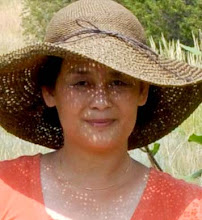Da Hua Lian Project is a long journey. It started in Sept 2007 and maybe it will completed by Sept 2012. Originally, I kept this project as a private journey until I had a conversation with a man three days ago. I decided to post my project via a blog to share what I have learned from the root of Chinese culture - I Ching or Yi Jing (易经).
Who I am: I was born in 1953 in China. I grew up in a specific time in which I had no opportunity to learn or appreciate the beauty of our traditional culture. I did not have formal fine art training or any other education from age 13 to 25. After I came to US in 1988, I became a computer programmer and did not have time in reading Chinese.
I always ask myself, why my thinking is based on binary math model. If there are three variables I naturally produce eight scenarios to cover all test cases in coding.
I remember in a class of advanced data structure in 1990, a teacher said no one was right in solving one problem. The teacher started to analyze the problem in depth and covered the whole blackboard with white chalk notes. Suddenly, he stopped for a while, and then erased all notes from the blackboard. He turned to us and said, Hong Yang’s answer is correct. I was shocked and wondered where the thinking power came from. I belong to the “Lost Generation” who missed 10 years of normal education during the Cultural Revolution from 1966 to 1977. I still keep that homework notebook in a box.
This mind processing influences me in painting.
Art in a none artist's mind: As self-taught painter, I might be a complete nut who does the artwork differently with many violations which breaks all rules in fine art. However, I enjoyed the journey with full passionate feelings because the whole painting process of this series was like a decoding of Chinese culture. During the journey of painting, I touched Chinese culture DNA code by code.
I started the first painting – Qian Gua (乾卦) on July 20, 2008, 10 months after the design completed. By August 30, 2009, 14 paintings will be finished in 13 months. I plan to complete this series of 64 paintings by September 2012. The whole journey from an idea to the end would be about five years.
Although I did not have much time to paint each day, I did what I could with the amount of time available. Sometimes, I was happy just to complete a tiny component. I enjoyed every minute spent in learning my own culture step by step. I kept a diary of this journey.
Along with this special journey at home in my limited spare moonlight time, at work I led a project team accomplished a huge IT project to migrate legacy utility billing systems from mainframe to SAP CCS. I had worked at least 14 hours per day during the whole project in 16 months. I always woke up in mid of the night with solutions to problems. I took quick notes on a notepad near the pillow. Many of the solutions are Chinese notations from I Ching or Yi Jing (易经).
Old sayings in nowadays: Thanks to those ancestors who created a powerful thinking process based on a binary mathematical model called Yin and Yang (in the contemporary world, it is called 0 and 1).
From I Ching or Yi Jing (易经) I learned that it is quite normal to be surrounded with various unknown changing forces therefore we should assess the change patterns in order to adopt or create positive positions without frustrations or insecure feelings. When unpredictable changes become variables to a predictable thinking process then there are no unpredictable fears in any changes.
The predictable thinking process is the way fully defined in I Ching or Yi Jing (易经). I realized that I had been influenced by I Ching or Yi Jing (易经) via reading Chinese classic novels and history books which had made me quite different from people in this part of world even before I entered here from the far east.
Planting seeds for dreams: The reason why I picked up Da Hua Lian as the visualized image notation in my painting is because my grandma was a fan of Peking Opera. I was influenced from my grandma who lived with me in same bedroom for years in the 60s.
Without knowing the seeds were planted deeply in my soul I would not be happy with those bothersome images around me all the time. It was very often that I had dreams of those floating and mixed painted faces – Da Hua Lian. WYSIWYG (pronounced wiziwig), is an acronym for What You See Is What You Get. You will WYSIWYG my dreams when you see the paintings.
Curiosity and un-erased images are composed of my artwork. The artwork to me is not just illustrating the images in a certain way but show the way of thinking (the virtual notation) by using those vicious notation. It might be a long lonely journey I initiated and fulfilled, but very interesting and full of enjoyment.
I would like to share 64 paintings of Da Hua Lian Array 《大花脸阵》and my diary to the world via my blog. This journey help me to be a fulfilled individual via the benefit from a timeless, superior, and valuable philosophy and beautiful human mind set - I Ching or Yi Jing (易经).
A MINDFUL MODE OF STILLNESS
7 years ago


